Fat Loss Diet Plan Without Exercise
Everyone knows the popular weight-loss mantra: Move more and eat less. And although they're listed together, these two pieces of advice don't need to be treated equally. In fact, it is possible to lose weight without exercise. Let us explain.
First thing's first: we are not denying that moderate-intensity exercise is good for maintaining and improving your health; however, dozens of studies have uncovered evidence that exercise alone may not be the best way to lose weight .
Many weight-loss strategies suggest that the more you work out, the more calories you'll burn, and the more you'll lose weight. But a recent study published in Current Biology found that this may not necessarily be true. The researchers discovered that once you start working out regularly, your body may end up adapting to this new level of activity. As a result, your body may end up lowering the total number of calories it needs.
"There is tons of evidence that exercise is important for keeping our bodies and minds healthy, and this work does nothing to change that message," one of the study's authors, Professor Herman Pontzer of City University of New York, told The Guardian. "What our work adds is that we also need to focus on diet, particularly when it comes to managing our weight and preventing or reversing unhealthy weight gain."
Even more research shows exercise can undermine weight loss by making you hungrier and it can mislead you into thinking it's ok to indulge in junk foods either as a reward for exercising or because you've created a calorie deficit. One Obesity Reviews study even found that people tend to overestimate how many calories they burn when they workout. As a result, participants typically overcompensated for their workouts by eating more calories than they burned.
Although exercise can certainly help build fat-burning muscle, it may not shrink your waistline as much as changing your diet will.
So now that we know "eating less" should take priority in your weight-loss journey, where to start? Because it's easier said than done, we've uncovered some slimming secrets that can help you drop pounds through diet swaps as well as lifestyle and eating habit changes. (And yes, de-stressing with a bubble bath is one of them.) Read on to find out how to lose weight fast without exercise, and for more on how to eat healthy, you won't want to miss these 21 Best Healthy Cooking Hacks of All Time.

Want to eat less? Your first line of defense is getting a good night's rest. When you don't get enough quality shut-eye, your body increases levels of the hunger hormone ghrelin and decreases the satiety hormone leptin—resulting in unignorable hunger pangs. Plus, studies show that your sleep-deprived self craves more unhealthy, high-calorie and high-fat foods, which means you'll not only eat more food, but you'll be eating more junk. For more ways to lose weight at night, read up—then ditch—these nighttime habits that cause weight gain.
RELATED: Sign up for our newsletter to get daily recipes and food news in your inbox!
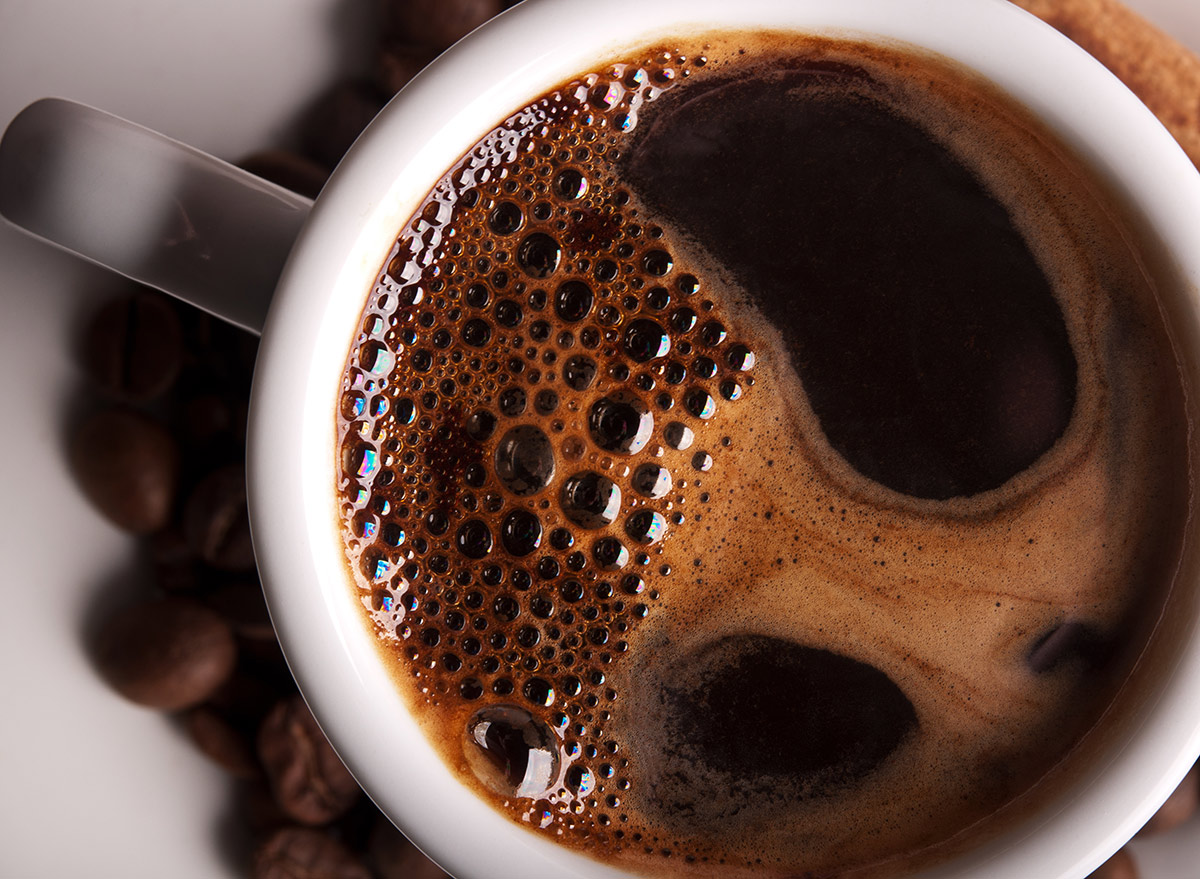
Over 50 percent of Americans drink coffee on a regular basis, and many of them use calorie-laden additives like sugar, flavored syrups, or cream in their beverage. As a result, rather than being a zero or five calorie drink, the average calorie count of a cuppa joe skyrockets 1,280 percent, to 69 calories, according to a recent study published in the journal Public Health. Not only will taking your coffee black save you nearly 500 calories a week, but, since more than 60 percent of those calories come from sugar, you'll also be lowering your risk of insulin resistance, diabetes, and other metabolic disorders. Leaving the sugar packets on the shelf is one of our easy ways to cut calories.
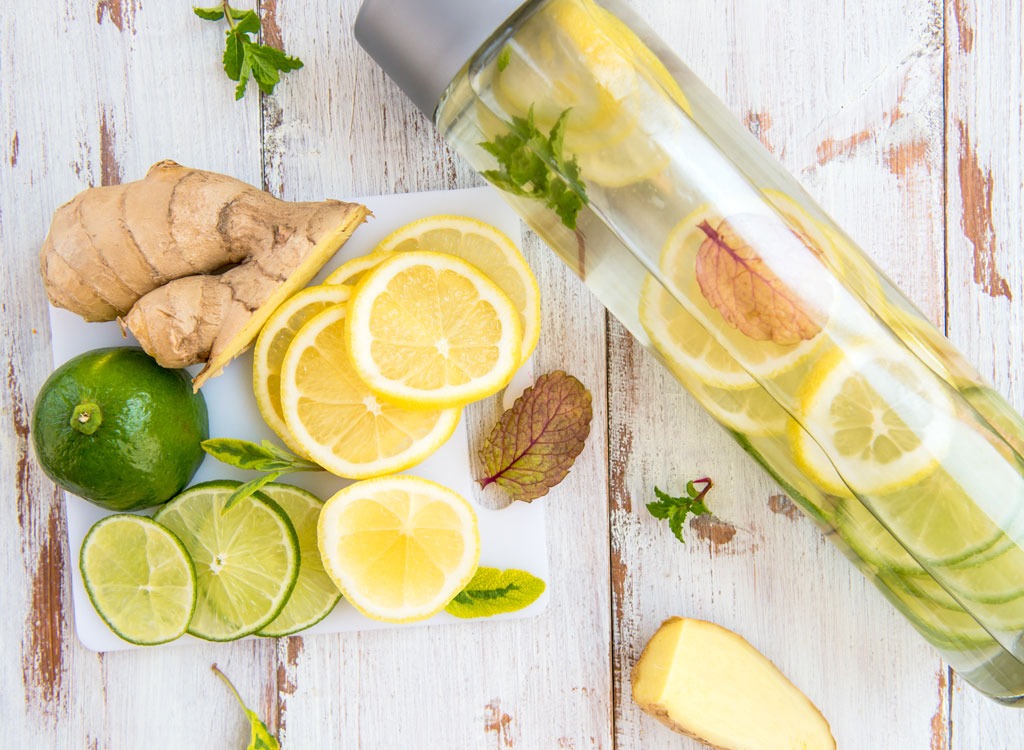
Did you know that 60 percent of the time we inappropriately respond to thirst by eating instead of drinking? So says a study in the journal Physiology & Behavior. Experts believe the mistake stems from the fact that the same part of our brain controls hunger and thirst, and sometimes it mixes up the signals. Not only will keeping a water bottle around help you respond to thirst correctly, but chugging water can help you feel full, keep your metabolism humming, and even help you debloat!
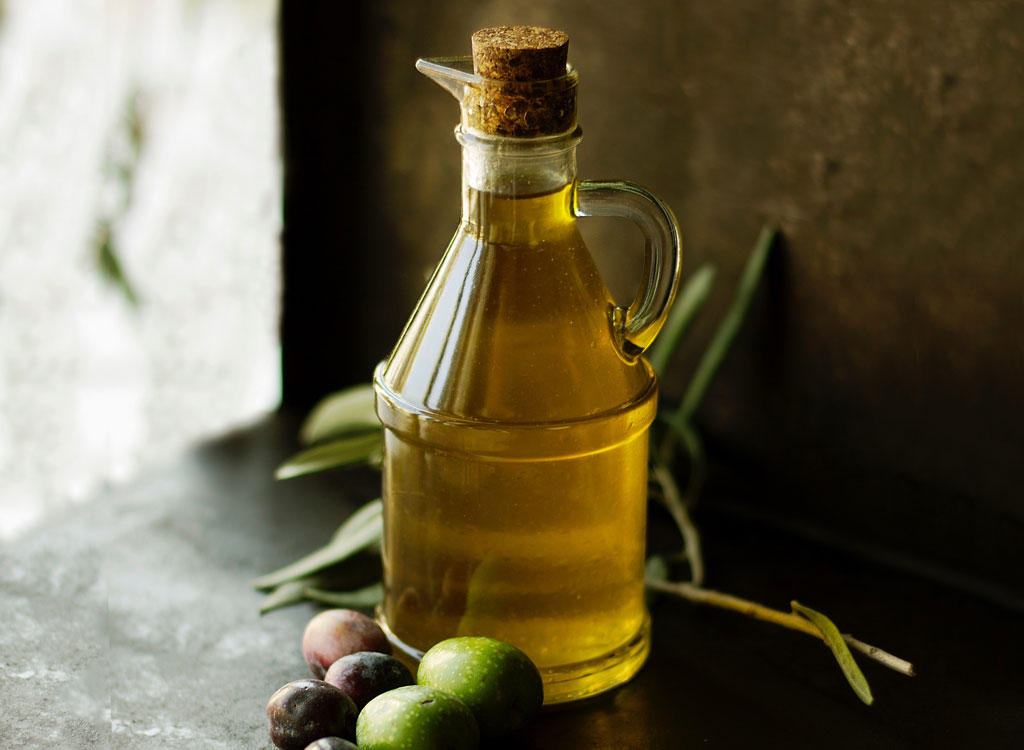
Vegetable oils like canola and soybean oil are high in inflammatory omega-6 fatty acids, which can throw your body into a state of chronic inflammation, causing weight gain and skin issues. Instead, grab a bottle of extra virgin olive oil, whose polyphenols have been known to help lower blood pressure and whose oleic acid has been found to help reduce appetite and promote weight loss.
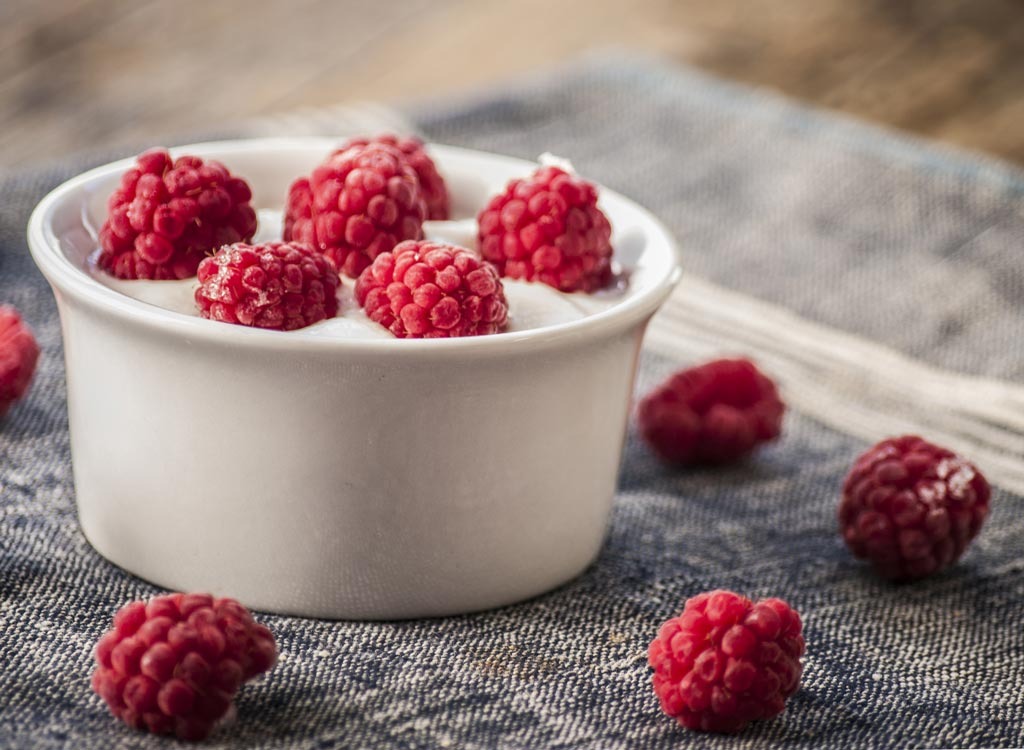
Dairy fat, that is. You may be surprised to hear it, but fat-free food doesn't necessarily translate to a fat-free body; According to a European Journal of Nutrition study, participants who ate full-fat dairy tended to weigh less and gained less weight over time than those who opted for non-fat products. Experts explain that non-fat foods can be less satisfying overall thanks to the low fat content (since fats are digested slowly and can keep you fuller longer), and because many fat-free food items are made with waist-widening artificial ingredients.

Don't push through that mid-afternoon grumble. Trust us. Studies have found that those who eat late lunches, and those who go the most time in between meals end up consuming more calories during those meals compared to those who eat more often. The reasoning is simple: when you're hungry—and running on empty—your body switches to starvation mode and increases production of your hunger hormones, which then causes you to overcompensate at your next meal. To keep yourself from overeating, always carry a snack with you.
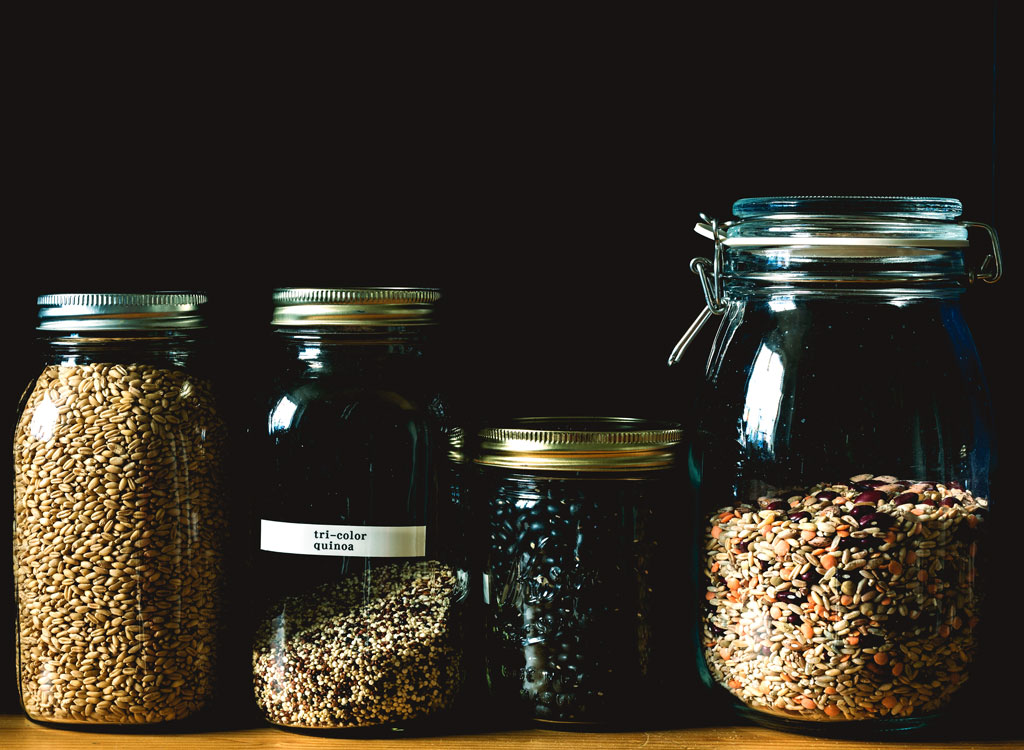
The junk food struggle is real—we know. And willpower isn't to blame. A University of Sydney study found that eating junk food can become a habit and one that's perpetuated simply by stepping into a room (like your kitchen) or experiencing a food cue (like a fast food commercial). Breaking these bad eating habits will take time and patience, but there's a simple fix: Prioritize healthy foods in front of junk food in your pantry. That way, when you're craving a cookie you have to push aside the almonds and quinoa to get to it. It'll serve as a little reminder to keep up your better-body goals.
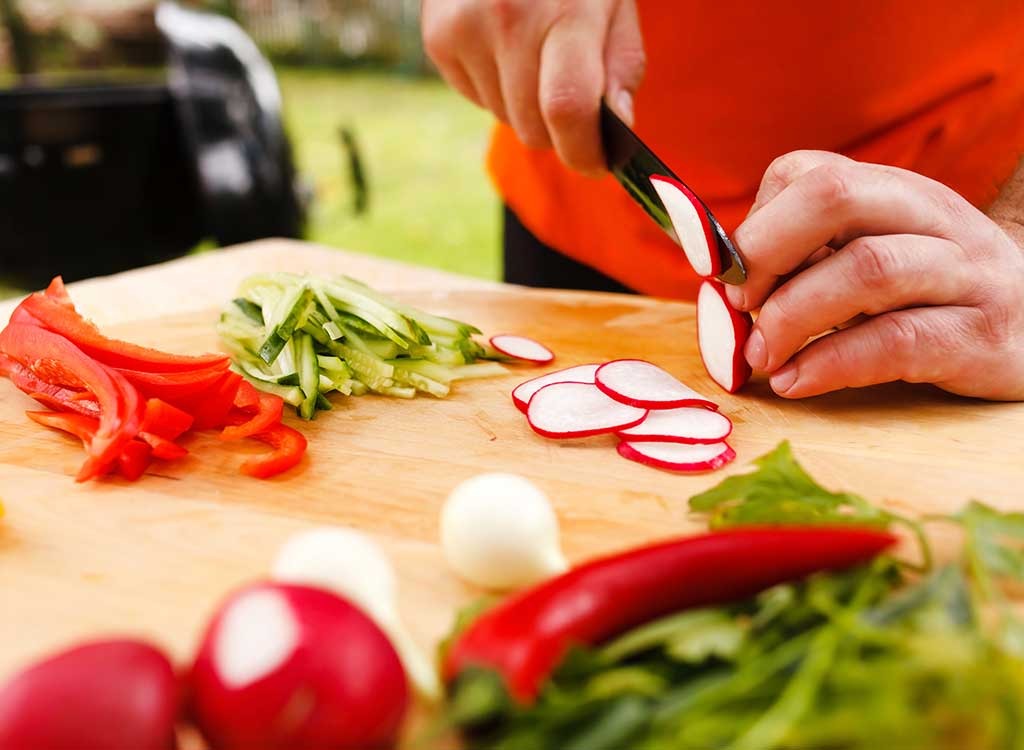
Fill up on veggies and you'll be less likely to fill out your jeans. Research published in the journal PLOS Medicine linked greater consumption of high-fiber vegetables to greater weight-loss results when compared with diets low in high-fiber foods. Not only are these veggies super-satiating, they're also full of anti-inflammatory antioxidants and will displace snacks like nutrient-deficient potato chips and pretzels.
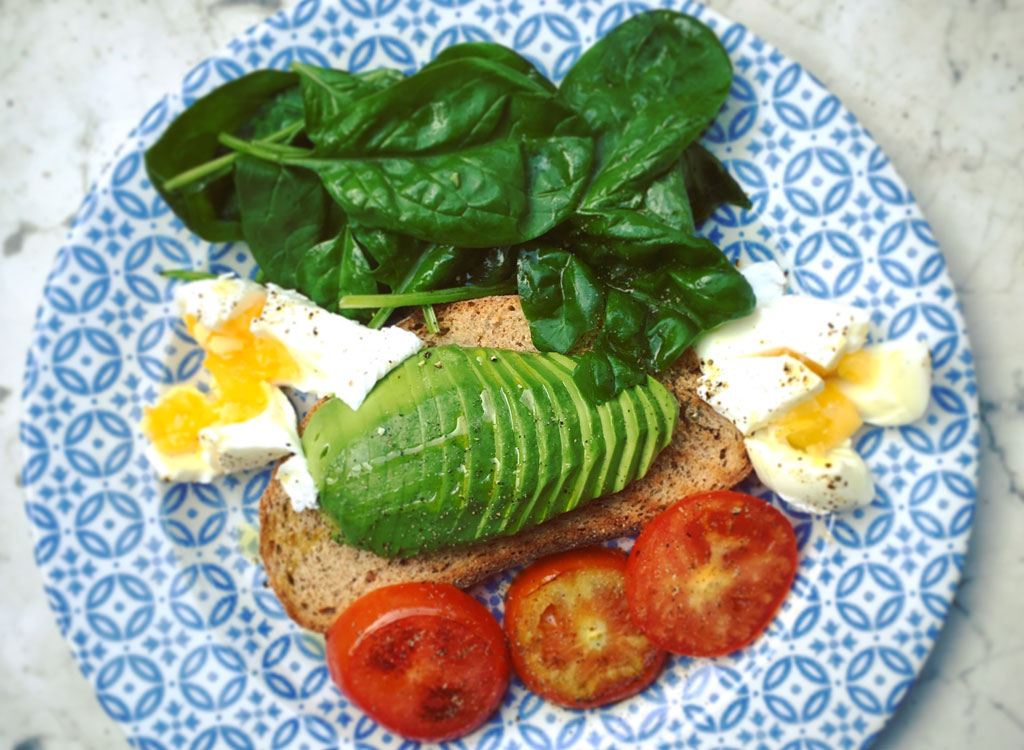
You don't have to go all-out vegan to reap the benefits of a meat-free diet. Just try for one lunch or dinner a week to lose weight without exercise. In doing so, you'll be consuming more plant-based protein, of which a University of Copenhagen study found to be even more satisfying than pork and veal-based meals, and make people feel more full. It gets better: The researchers also found that participants who ate a vegetarian high-protein meal consumed 12 percent fewer calories in their next meal compared to those who ate meat!
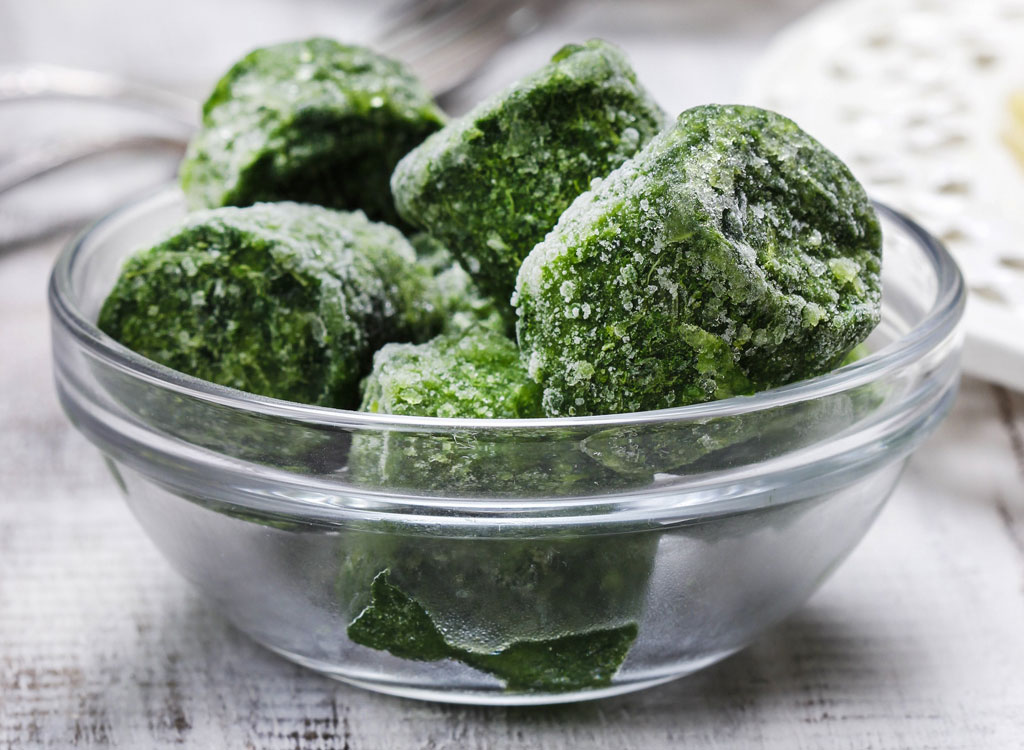
You have two options when you get home late from work starving and see an empty fridge—one, order belly-bloating, high-calorie, greasy takeout, or two, whip up a quick veggie-packed stir fry with the frozen veggies you always keep in your freezer. If you keep healthy ingredients on hand (like frozen fruits, veggies, and pre-portioned protein), you won't have to resort to unhealthy delivery meals. For tips on what you should stock in your pantry, don't miss these weight loss ingredients to always have on hand.
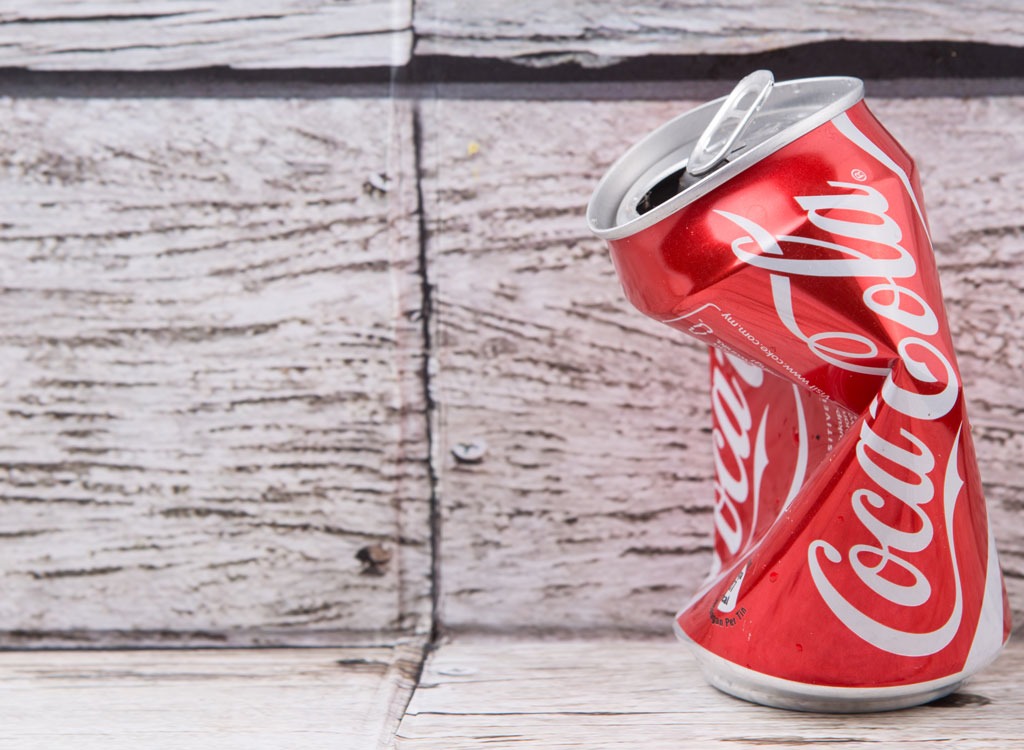
One of the simplest ways to cut calories is to limit products that have added sugar. These simple carbs are essentially void of nutrients and can cause you to be perpetually hungry (which means you're likely to overeat). The most effective tactic is targeting beverages: sugary coffees, iced teas and soda. These liquid calories are in a class of their own: An American Journal of Clinical Nutrition found that energy obtained from drinking fluids has been shown to be less satisfying than calories from solid foods, which causes us to drink more (and a greater number of calories) before we feel satisfied. Just to see how poorly your favorite stacks up among the pack, check out our exclusive report: popular sodas ranked by nutrition.
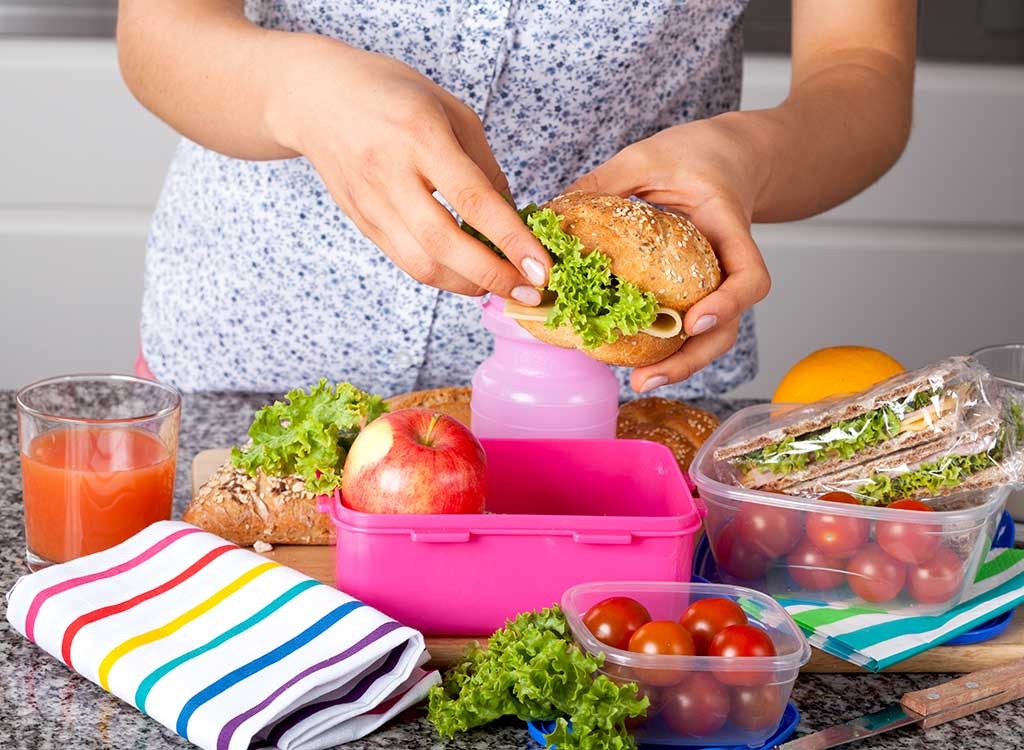
Preparing your own lunch means you put the calorie-cutting power in your own hands—not in the hands of the restaurateurs who have no stake in your weight-loss journey. Prepare any of these healthy lunches under 400 calories, and you'll save 600 calories a meal compared to if you ate at a standard sit-down restaurant, whose midday meal can average more than 1,100 calories.

A lunch break should be just that—a break! Research published in the American Journal of Clinical Nutrition found that children who eat while distracted (like while watching T.V.) can consume 218 calories more in one sitting than they would otherwise. Experts explain that keeping your mind busy while eating can prevent certain satiety cues from instructing your brain that you've had your fill.
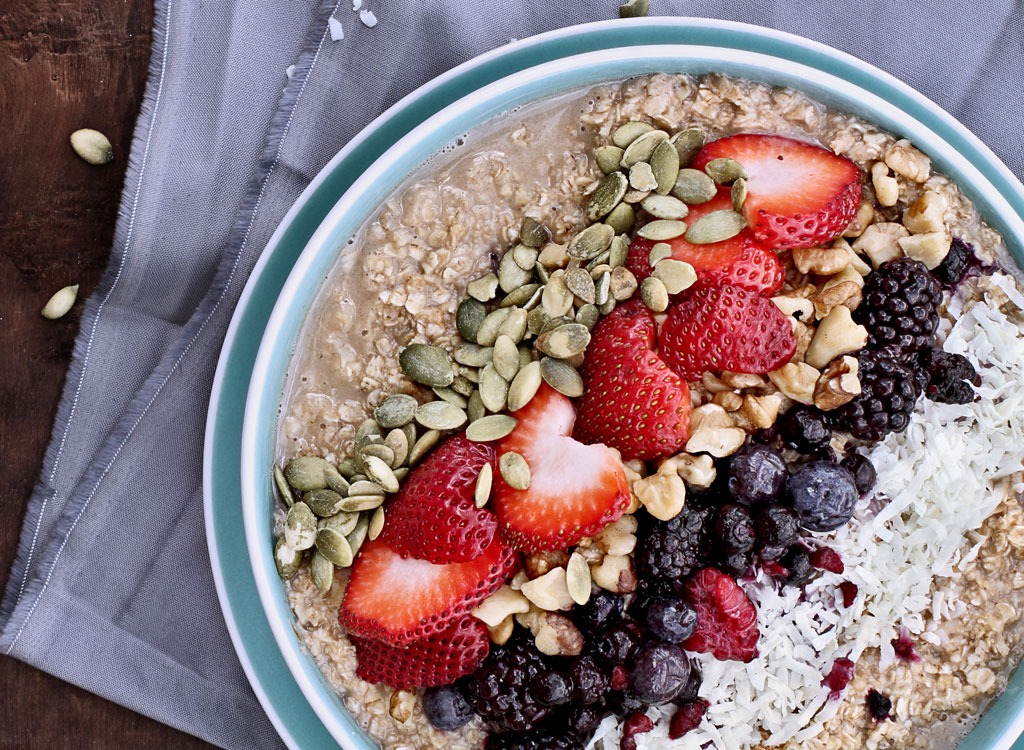
You won't just get more likes on your Instagram photo. Making your food look picture-perfect can encourage you to load your plate up with more colorful, fresh veggies. What's more, it may even make your food taste better! A study published in the journal Health Psychology found that when participants spent time preparing the food they make, they found it to be significantly more satisfying than those who had the food prepared for them, even if the food was considered "healthy."

Eating well is essential to weight loss, but a good diet alone may not be enough to counteract all the harmful effects stress has on our bodies. A new study published in Molecular Psychiatry suggested that being stressed could even override the benefits of making better food choices! When you're constantly pulling your hair out, the stress hormone cortisol builds up in your body. And that's bad news for your belly. Cortisol forces your body to store fat and revs your hunger for high-calorie foods, meaning that you may start craving a donut even if your stomach is actually full. While improving your diet is important, you'll be more successful if you take a second to relax (and yes, taking a bubble bath counts!).

Ever heard of the seafood diet? You see food and immediately eat it! To curb your junk food consumption, start by ridding your workspace and kitchen counters of your dietary kryptonite. Keeping these vices visible will set yourself up for failure by triggering a trait dubbed by Oxford researchers as "visual hunger:" an evolutionary trait that increases levels of hunger hormones when we see food. Instead, hide your stash in opaque containers or in the back of your cabinet.
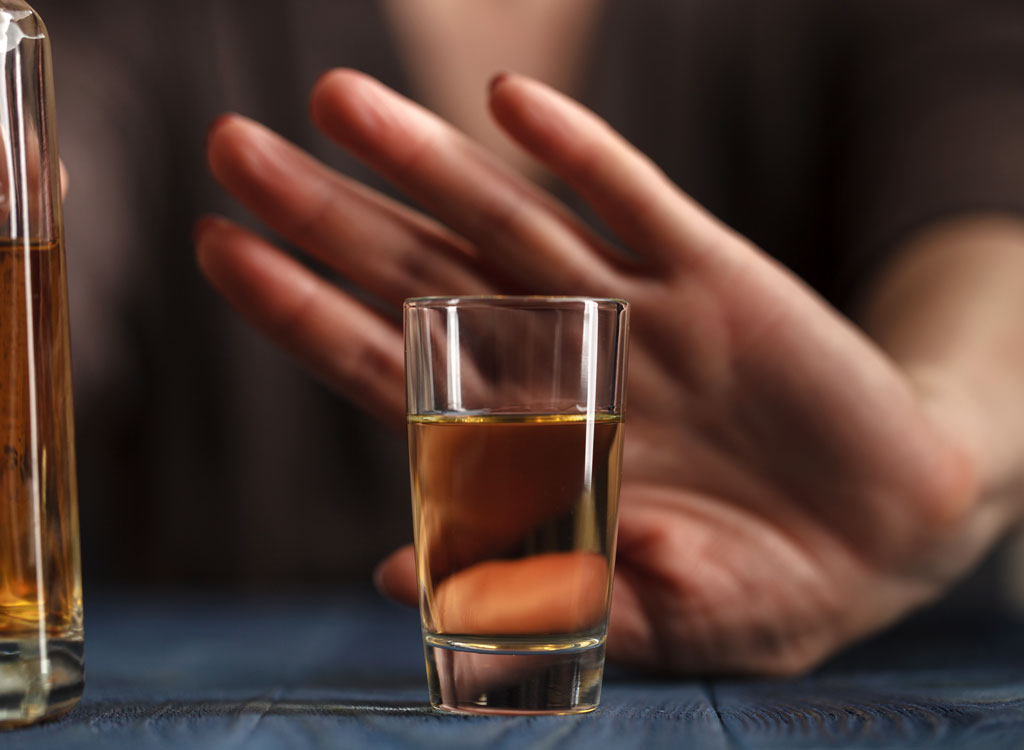
Look, we'll be the first to tell you we love wine—especially red wine, which actually offers antioxidants and is considered relatively healthy when consumed in moderation (no more than two glasses a day). But if you're looking to lose weight, one of our best tips is to put down the glass. Because alcohol is fairly caloric and provides relatively few nutritional benefits, drinking shouldn't be an everyday event. For example, two pints of beer a day can add nearly 2,000 calories to your weekly intake—so cutting it out can help you lose over two pounds a month. For those few times that you do choose to indulge, though, do so wisely with the help of these tips for choosing healthy alcoholic drinks.
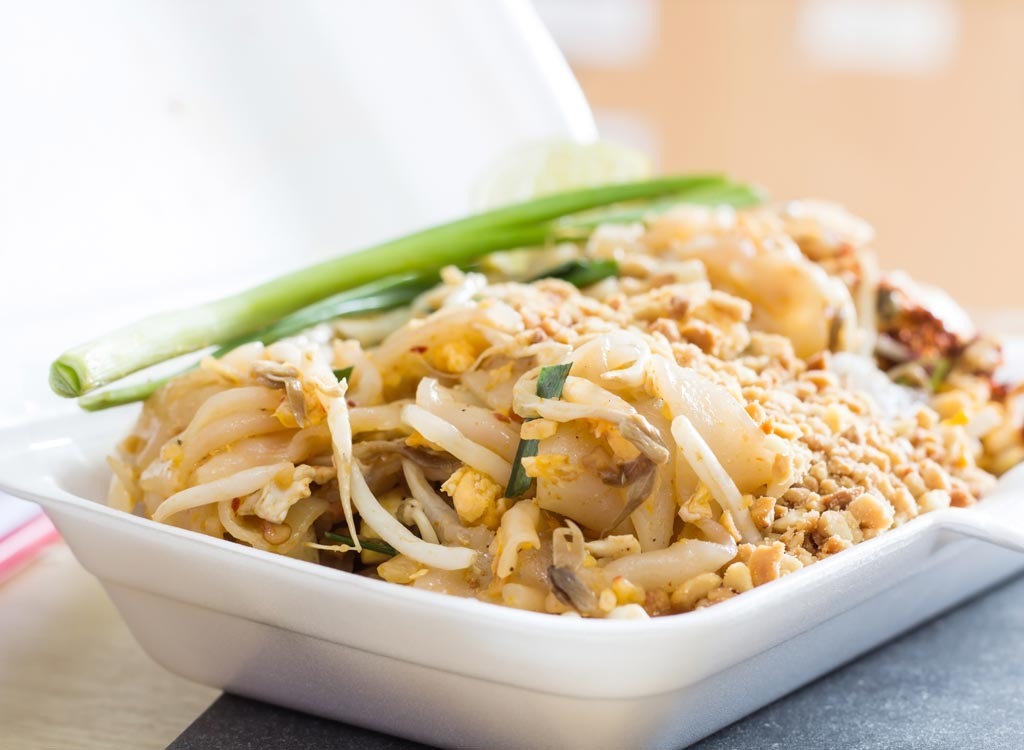
We have no issue with eating out once in awhile, but heed this advice: ask your waiter to box up half the meal before it reaches the table. A Journal of the Academy of Nutrition and Dietetics study discovered that the average meal at your local American, Chinese, or Italian restaurant contains a whopping 1,500 calories, so following this tip can save you a cool 750 calories. Plus, you'll get a free lunch for tomorrow!
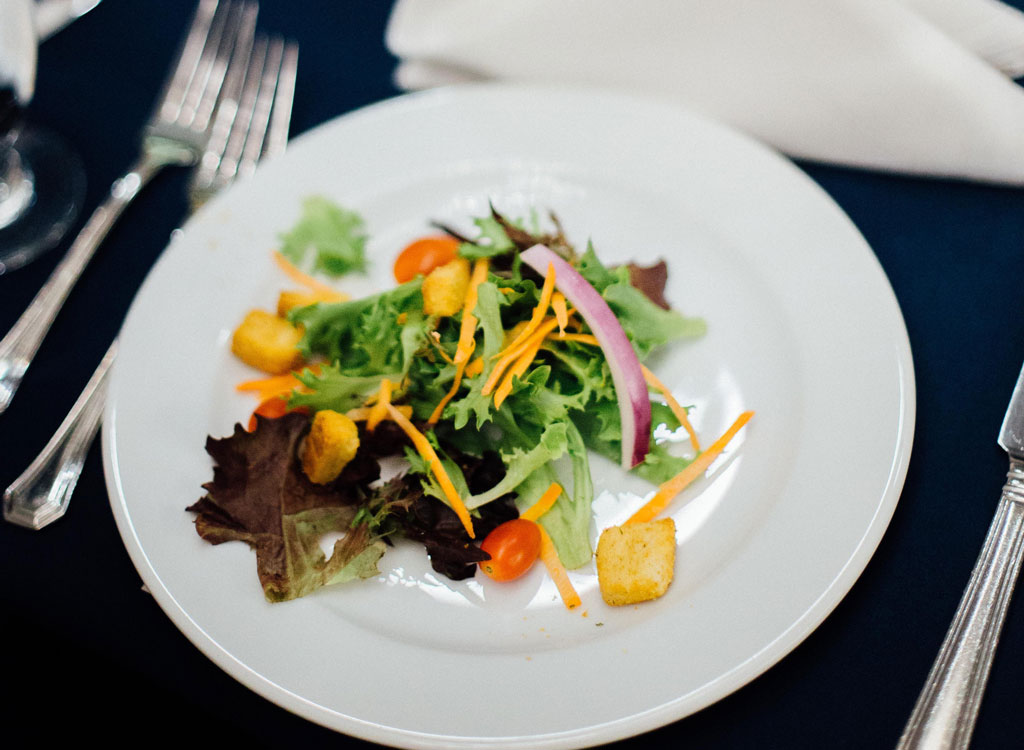
We're singing, "bye, bye, miss American fries!" You can even stick with your weekly burger order from your favorite pub, just sub out the spuds for a salad. Doing so can save over 150 calories while filling you up with fiber-rich veggies that are great for improving digestive health.

Here's a simple tip to avoid eating unhealthy foods: serve yourself. According to USC researchers, the simple act of having to plate your own grub, instead of having a server or friend dish out a helping for you, can curb an unhealthy indulgence. So next time you're celebrating a coworker's birthday, serve (and cut!) your own slice of cake.

Here's a great excuse for date night!: A new Cornell study found that men are at unique risk of overeating in social situations—even if there isn't an incentive to do so. "Even if men aren't thinking about it, eating more than a friend tends to be understood as a demonstration of virility and strength," explained co-author of the study, Kevin Kniffin, PhD. So instead of meeting up with a whole crew for a night out, opt for a romantic dinner for two or see your guy friends one at a time to keep yourself from overdoing it.

Comfort foods earn a spot in our hearts because they taste good and evoke strong, pleasant memories of growing up. Although it's OK to indulge in one of these classics once in awhile, you may want to cut down on the number of mom's recipes in your weekly roundup. According to an analysis of 30 years of data by the London School of Economics, the traditional meals your parents and grandparents used to make are simply too caloric for our less-active generation. Instead, don't be afraid to venture out of your comfort zone and check out healthier recipes: start with these 20 Healthy Sandwich Recipes!
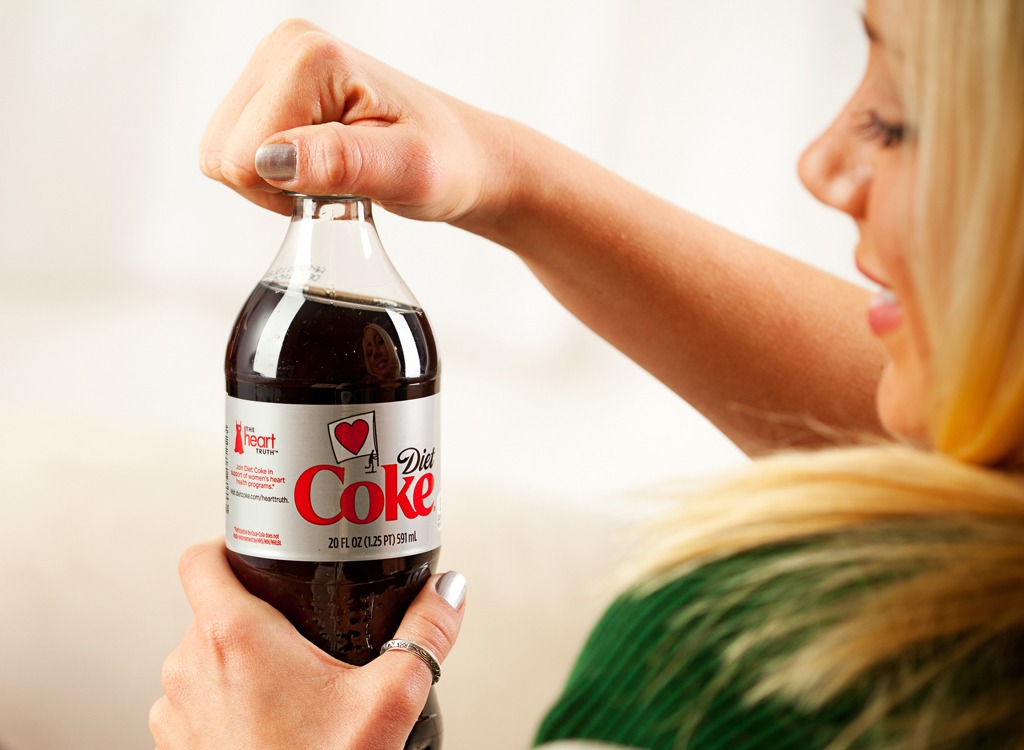
It can seem like a simple fix when you're going on a diet, but don't fall prey to these marketing ploys. "Diet" foods are usually loaded with artificial sugars like sucralose and aspartame. Although artificially sweetened beverages contain fewer calories than sugary versions, a review of more than 30 years of studies found there to be no solid evidence that sugar-free alternatives prevent weight gain. Although artificially sweetened beverages contain fewer calories than sugary versions, researchers say they still trigger sweet receptors in the brain, which may make people crave food. Coupled with the fact that most people view diet drinks as healthier, it could lead to over-consumption, the researchers argue.
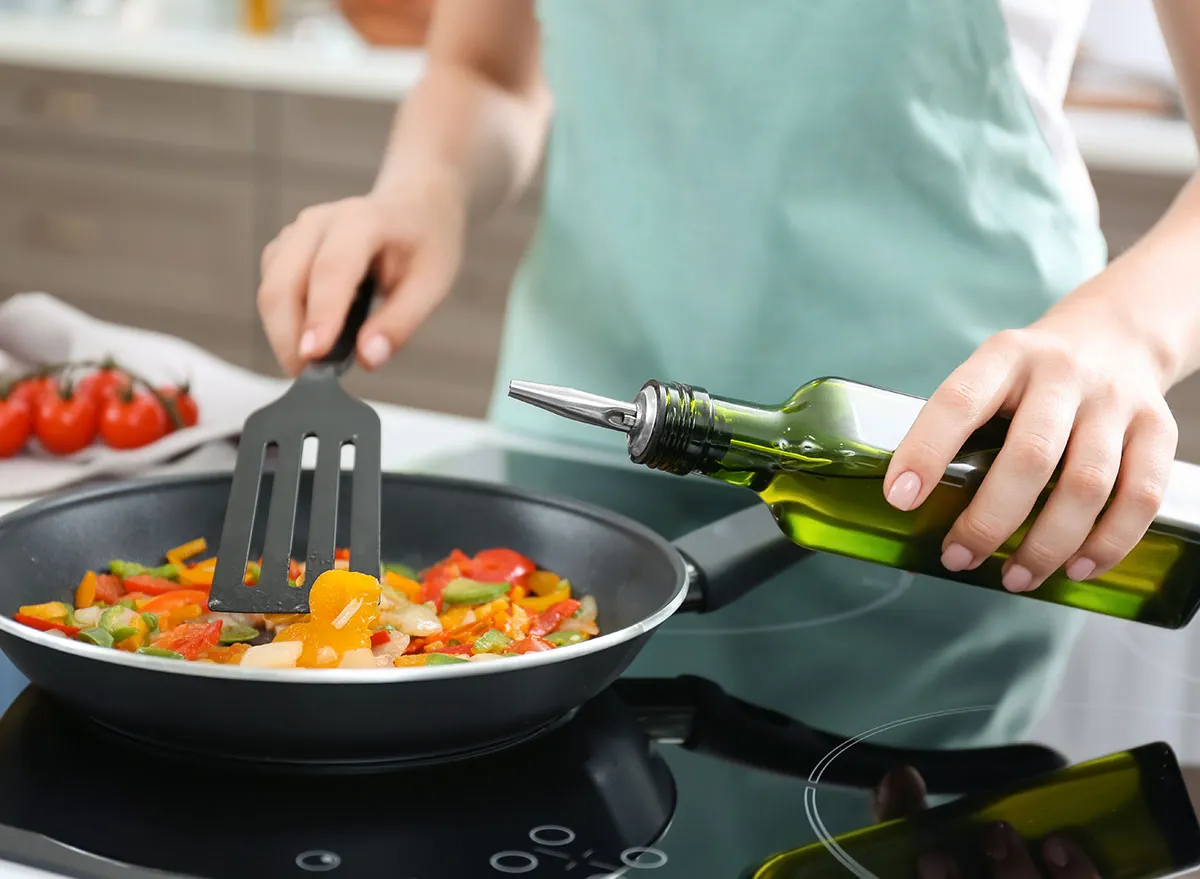
You already know that restaurant dishes are high in calories, but we're not just talking about takeout. A study published in the journal BMJ Open found that most food Americans eat is "ultra-processed," which means a product is made of several processed ingredients like flavors, colors, sweeteners, emulsifiers and other additives to disguise its undesirable qualities. Examples include store-bought items like bread, frozen meals, soda, pizza, and breakfast cereals. Not only do ultra-processed foods lack nutrients that protect against health issues, they make up 90 percent of our added-sugar intake, which causes a range of health issues from obesity to type II diabetes. Sub out a Lean Cuisine for a home-cooked dinner, a bowl of cereal or a couple of eggs overeasy to spare your tummy the trouble.
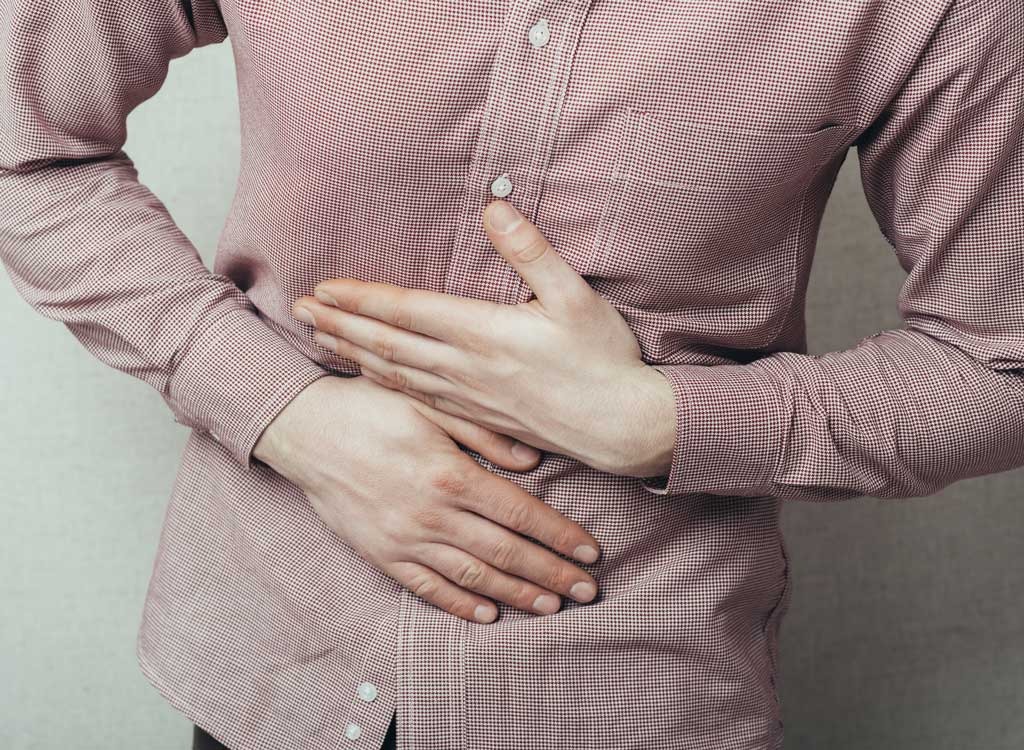
How many times have you battled through a cup of ice cream while praying your stomach doesn't start acting up? Although you might feel like it's not a big deal to push your body to its limit, you might be missing the root of the issue: you could be suffering from a food intolerance or allergy. So, each time you eat dairy, gluten or refined grains, it can contribute to extra inflammation, a weakened immune system, and weight gain. Learn to listen to what your body tells you by keeping note of any discomfort in a food journal. Or try an elimination diet—call in the pros for help if you're experiencing one of these signs you should see a nutritionist.
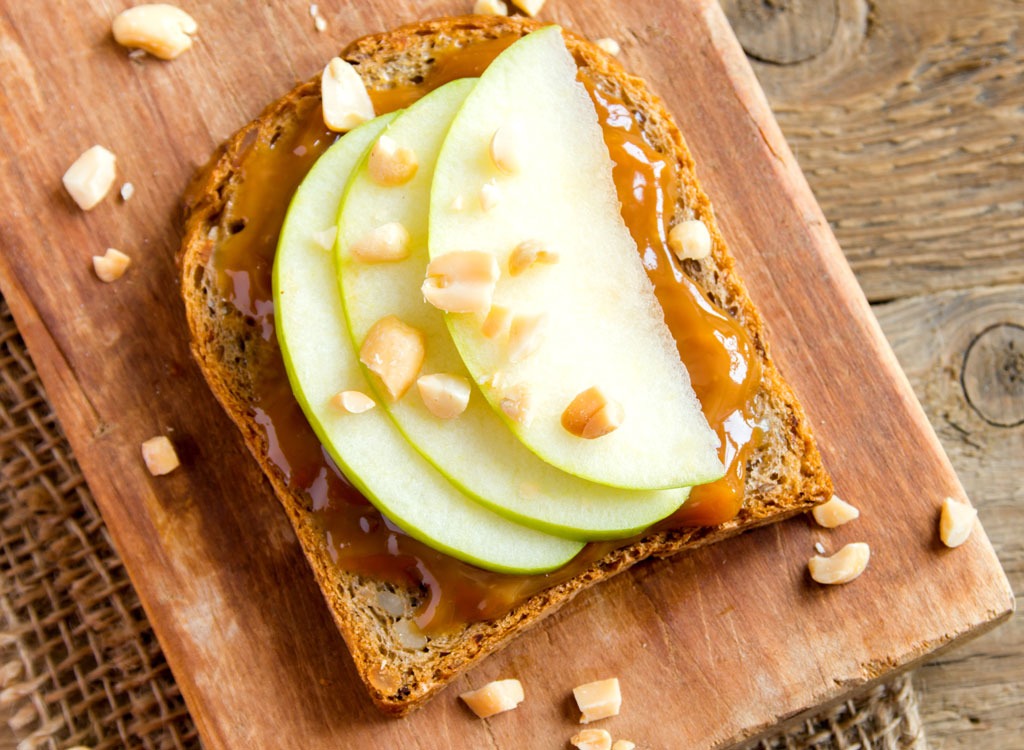
You don't have to keep up with the latest food trends and cook your way through every foodie magazine on the shelves to get lean. In fact, trying to switch up your routine too often can feel tedious and time-consuming, which may cause you to abandon your dinner plans and just order high-calorie takeout. Instead, make eating choices easy by finding a few favorite healthy, go-to recipes and stick to them so you can lose weight without exercise.

Fast food isn't just bad for you because it's full of gross additives and chemicals; it's also because it's precisely engineered to be eaten as quickly as possible. And that's bad news because you can end up eating more than your body needs to feel full. It takes roughly 20 minutes for your stomach to signal to your brain that you've eaten your fill. Eat your meal at superspeed, and you're more likely to overeat. Our suggestion? Take time to chat with your friends and family while you eat. Put your fork down. Chew slowly. Anything that will extend your meal until the 20-minute mark.
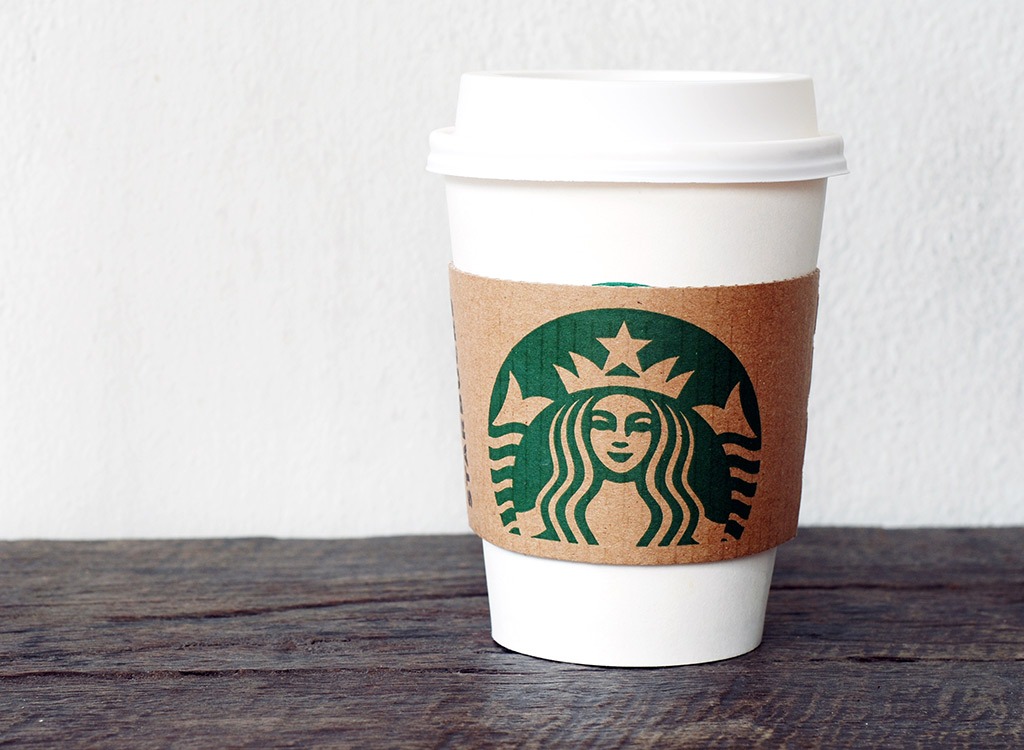
It may not be groundbreaking advice, but it's tried and true: portion control saves you hundreds of calories in the long run. Ordering your favorite latte in a tall size instead of a venti can save you at least 150 calories per Starbucks run. Want more simple ways to stick to serving sizes? Check out these easy ways to control portion sizes.

Here's another reason to skip the gym: not only do studies show your body burns more calories when you exercise outdoors compared to indoors, but an Environmental Science & Technology study recently found that you're also more likely to report a greater sense of pleasure, enthusiasm, and self-esteem and lower sense of depression, tension, and fatigue simply by walking in nature compared to on a dreary treadmill. Of course, it's a bonus that you're burning more calories, but Cornell researchers have also found that improving your mental health and mood can lead to healthier food choices.
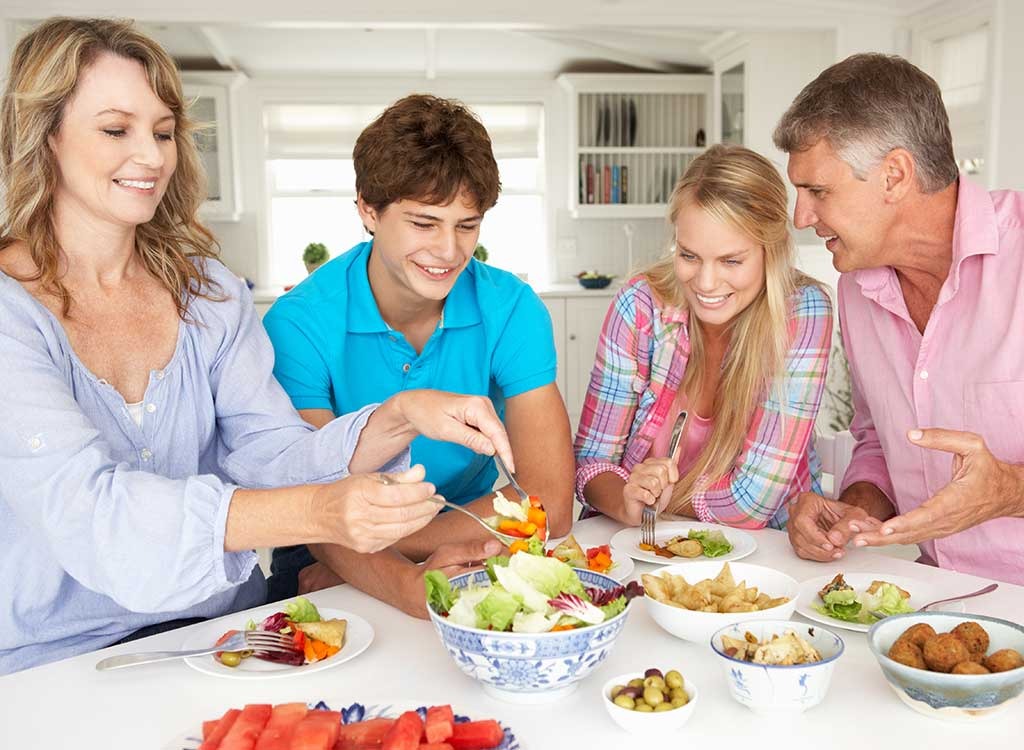
We're huge proponents of family dinners, but make sure to plate your home-cooked meals before sitting at the table. When you dine buffet-style from the counter rather than laying out each dish on the dining room table, it causes people to think twice about whether they really need another helping before getting up to serve themselves again. When the food is right in front of their plate and within reach, it's much harder to turn it away, and family dinners could turn into one of the 50 Little Things Making You Fatter and Fatter.
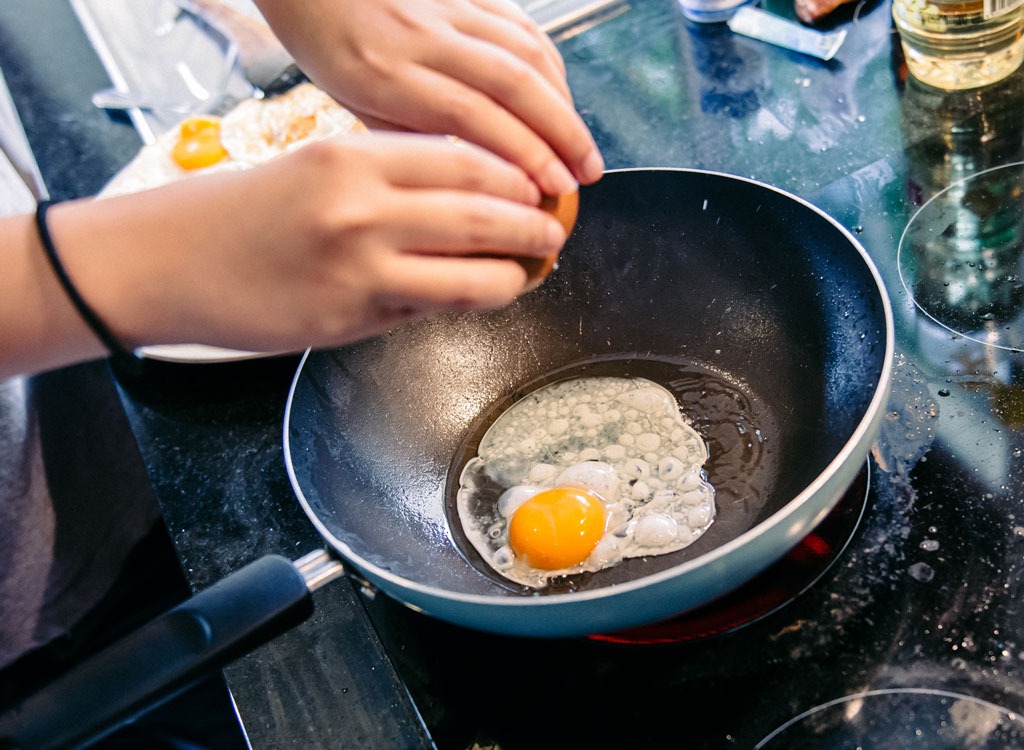
Research has shown eating eggs for breakfast can make you feel more full and help you eat fewer calories throughout the day, meaning they're quite the secret weapon for weight loss. Nutritionally speaking, one large hard-boiled egg (about 50 grams) contains less than one gram of carbs and remains an excellent source of protein. Eggs are also loaded with amino acids, antioxidants, and healthy fats.
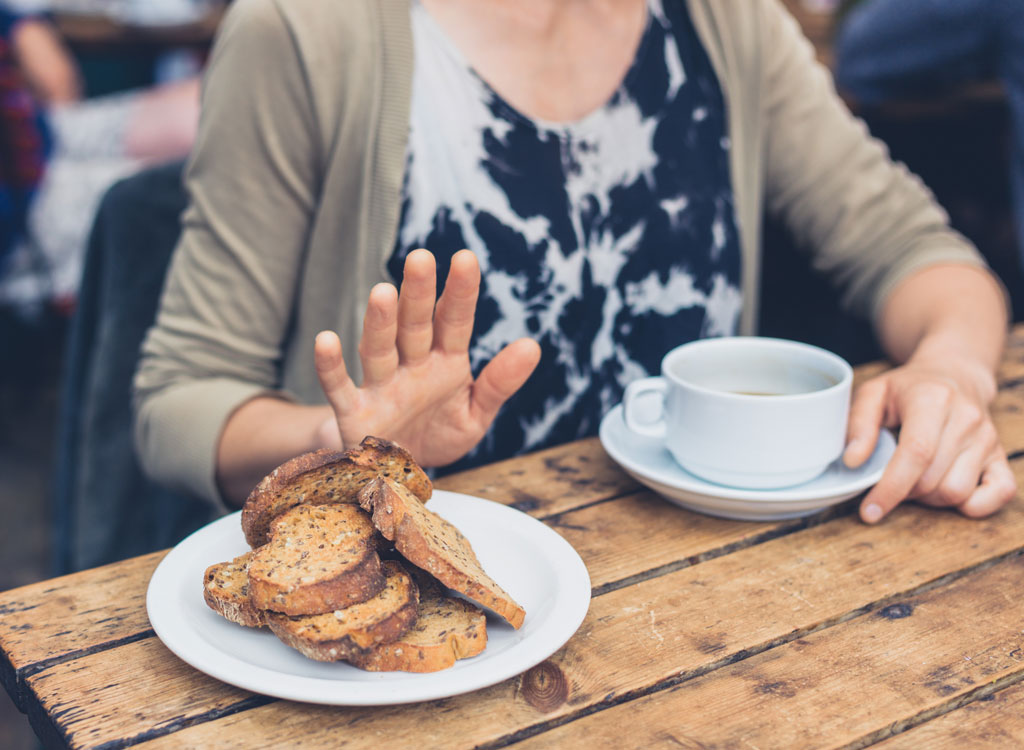
There's no denying dinner rolls are delicious, but when dining out, instead of carb-loading so early on in the meal, steer clear of the bread basket and order a leafy green salad instead. If the bread basket is still too tempting to avoid, try munching on a high-fiber snack before leaving the house, such as a handful of nuts. The fiber found in nuts will keep you satiated, meaning you won't be as easily induced to reach for the bread and butter, and you'll be swapping out unhealthy fats for healthy ones. It's a win-win!

Much like drinking your coffee black, it's important to keep your drink orders as simple as possible. A 2012 CDC study found that the average adult consumes about 100 calories worth of alcohol daily, but favoring a glass of wine instead of beer or sugary cocktails can drastically reduce that figure and make your waistline slimmer. In addition to having fewer calories than most alcoholic beverages, red wine, in particular, contains resveratrol, an antioxidant that is believed to have heart health benefits because it helps prevent blood vessel damage and reduces your 'bad cholesterol.' Just remember to imbibe in moderation.
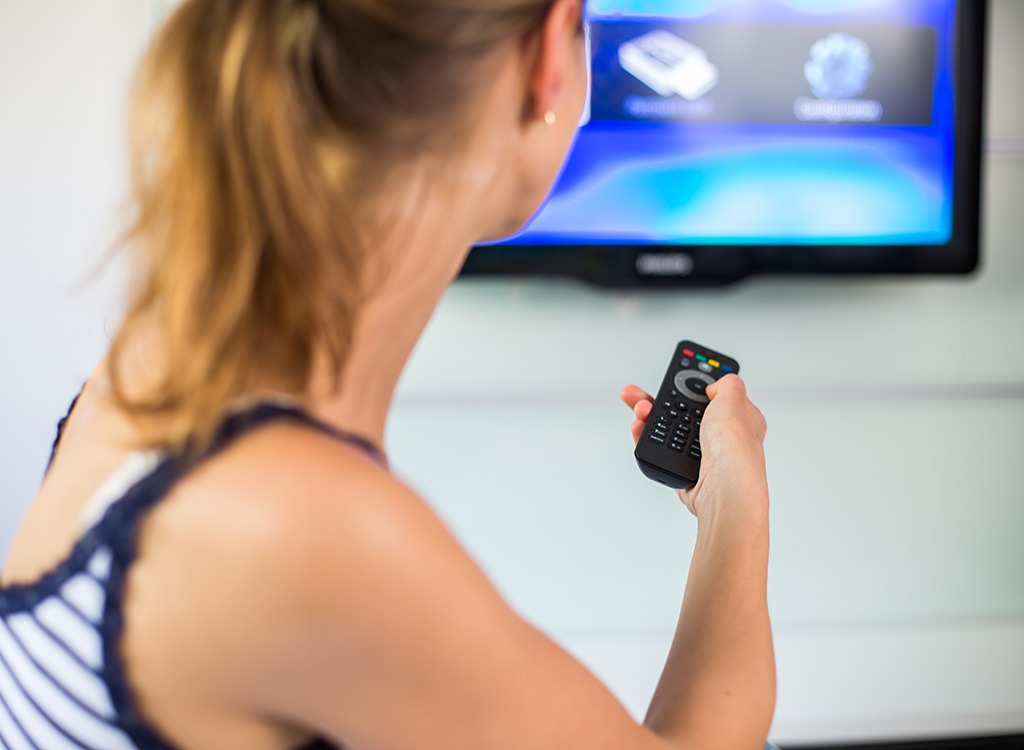
Research first linked TV watching to obesity more than 25 years ago, and since then additional research has been done to indicate how screen time in general (time spent in front of computers, iPads, etc.) can contribute to weight gain. Since watching TV or surfing the Internet during a meal can be distracting, a Harvard study found it tends to lead people to eat more and thus consume more calories. Instead, experts advise unplugging during mealtime so you can focus on what you are eating, that way you won't overeat and you'll know when you're full.

If your dress code allows, wear jeans to work. A study by the American Council on Exercise found that casual clothing, as opposed to traditional business attire, can increase physical activity levels in one's daily routine. Participants in the study took an additional 491 steps and burned 25 more calories, on days they wore denim than when wearing traditional work attire. In fact, even just donning denim on Casual Friday can make an impact. Researchers say keeping it casual just once a week could slash 6,250 calories over the course of the year—enough to offset the average annual weight gain (0.4 to 1.8 pounds) experienced by most Americans.

Speaking of work, it's no secret that being chained to a desk all day is bad for your overall health. However, simply standing at a desk as opposed to sitting has been shown to contribute to weight loss. Researchers found standing burns about 54 calories over a six-hour day, and although that might not sound like much, those calories accumulate quickly. At that rate, you can burn over 1,000 calories a month just by staying on your feet.
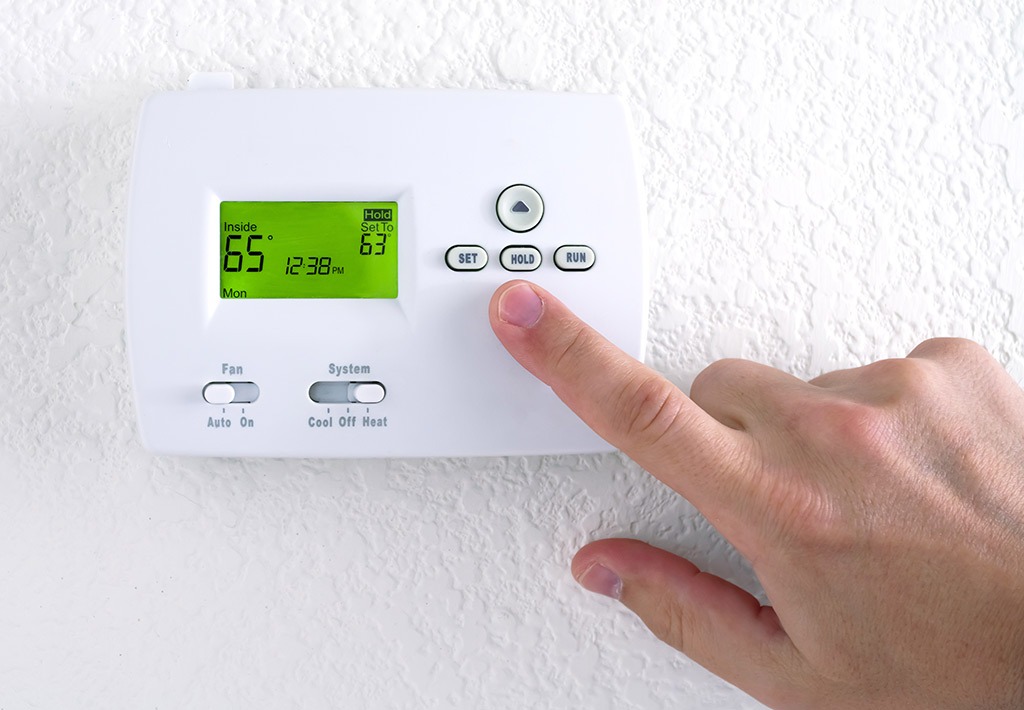
Believe it or not, a myriad of studies have shown that simply turning down the thermostat by a few degrees can help you lose weight because cooler temperatures force the body to work harder to stay warm. For a 2013 Japanese study, participants were exposed to 63 degrees two hours a day for six weeks. At the study's end, their average body fat mass decreased by about five percent.
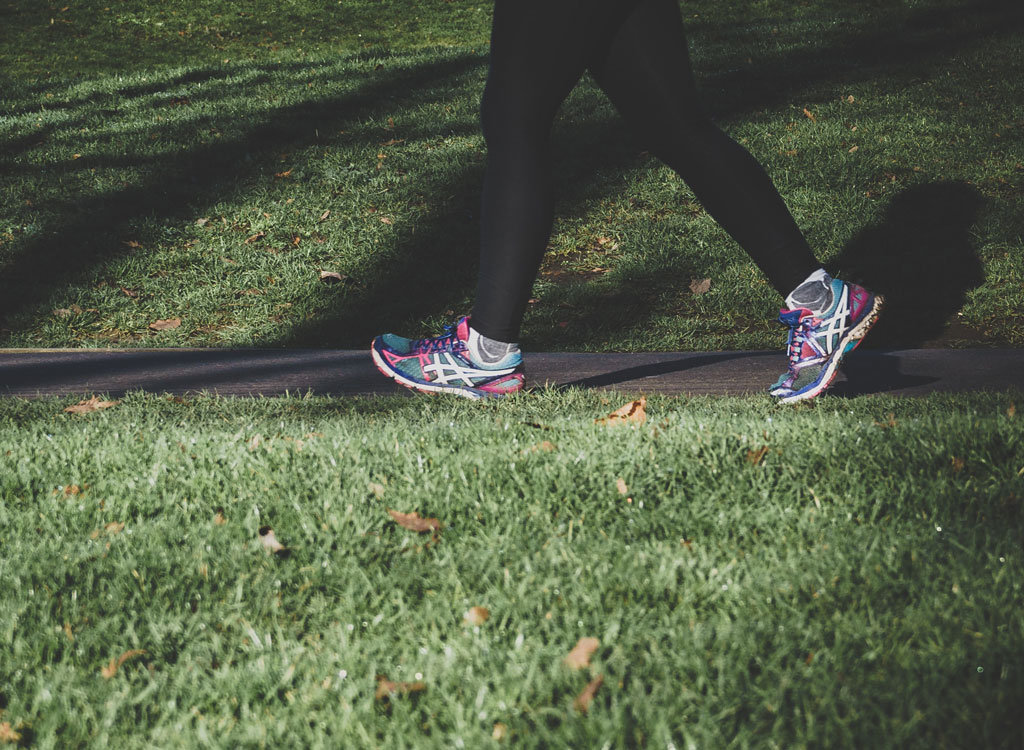
Even if you don't have time to hit the gym, getting your heart pumping each day can contribute to weight loss. Whether it's taking the dog for a morning walk or using the stairs instead of the elevator, increasing your heart rate even briefly each day will keep your body healthy and in shape, thus reducing unwanted weight gain.
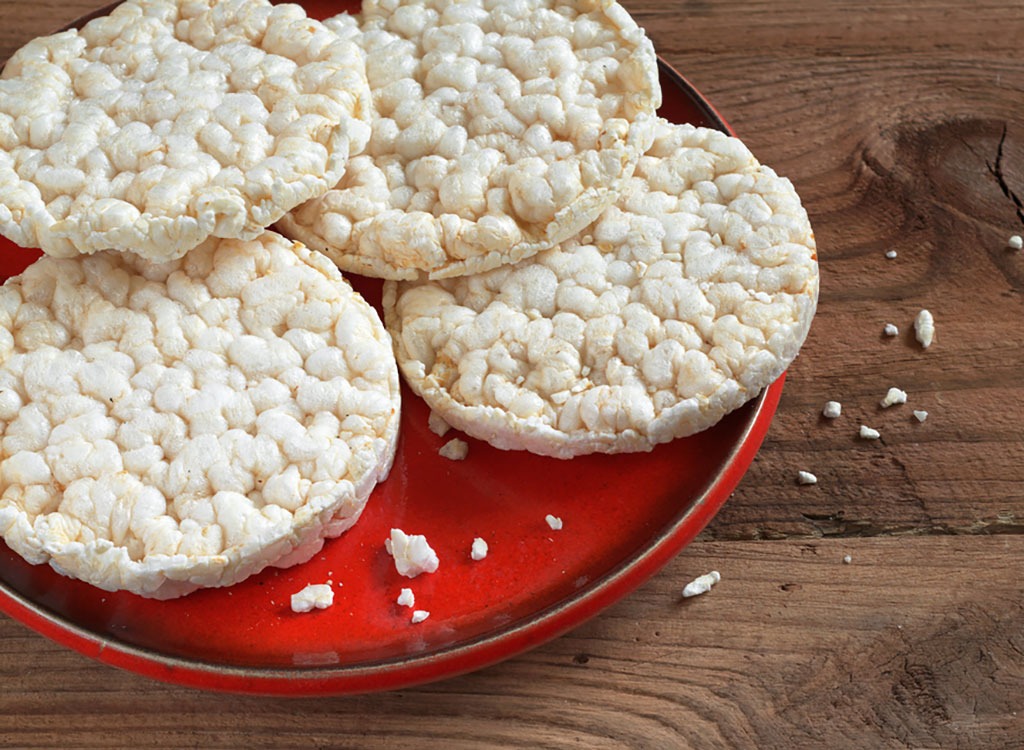
Though it may sound silly, the color of your dishware and the color of your food can determine whether you eat more or less. Per a recent study from Cornell University, diners actually serve themselves more food if the color of their food matches the color of their plate. In other words, if you're eating from a white plate, you're more likely to help yourself to more rice or pasta. Conversely, if your goal is to eat less, select plates that have high contrast with what you plan to serve for dinner.
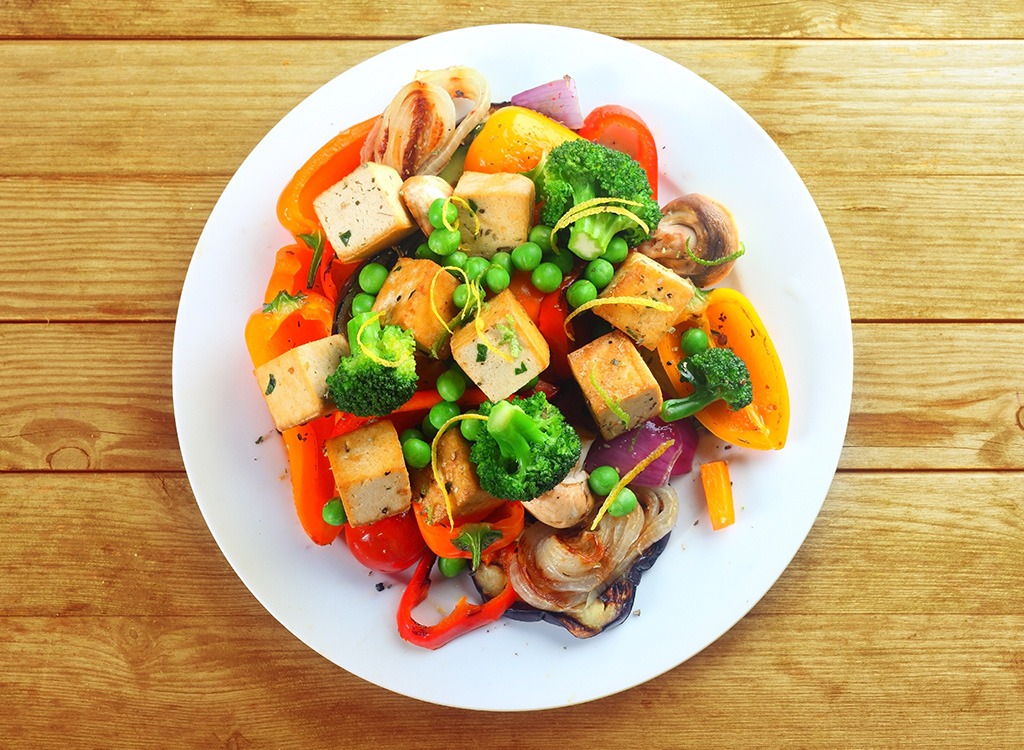
Speaking of dishes, purchasing smaller ones can also help you lose weight without exercise because smaller dishes mean smaller portion size. By filling up a smaller plate, you can actually trick your brain into thinking it's consuming more calories than it would if the same amount of food was placed on a larger dish.
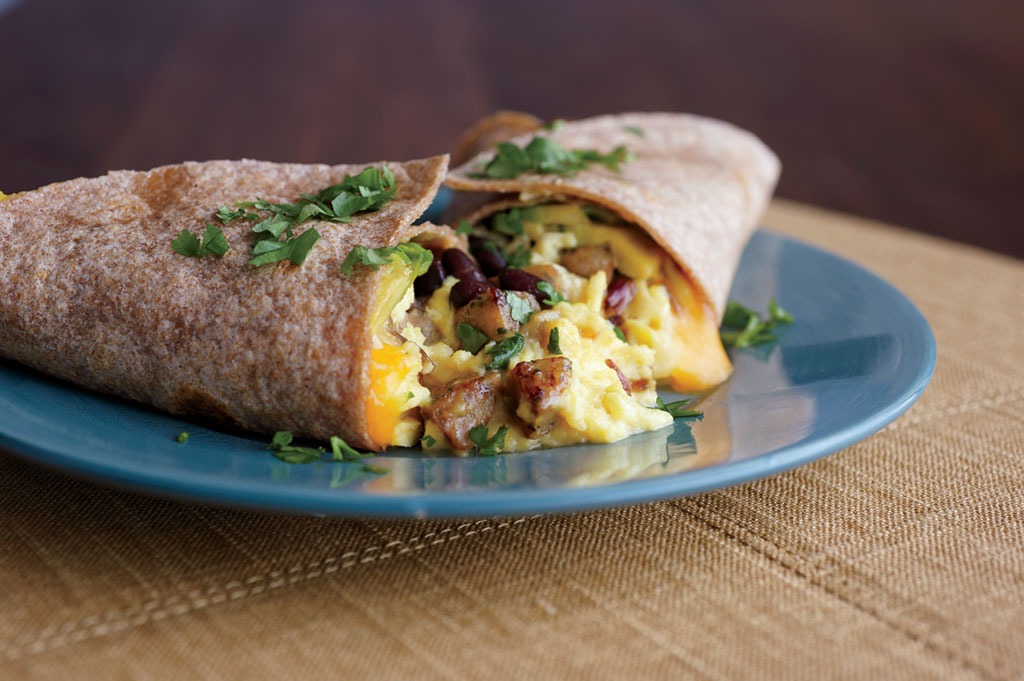
Common sense states if you want to lose weight you shouldn't have a large meal not long before going to bed, and now we have additional research to back up that hypothesis. A study published in The Obesity Society followed two groups of overweight women with metabolic syndrome on identical 1,400-calorie weight loss diets for 12 weeks. While both groups consumed 500 calories at lunch, one group consumed 700 calories for breakfast and a 200-calorie dinner (the "big breakfast" group), while the other group ate 200 calories at breakfast and 700 calories at dinner (the "big dinner" group). Even though the nutrient content of the meals was exactly the same for both groups, after three months the big breakfast group lost about two and a half times more weight than big dinner group.
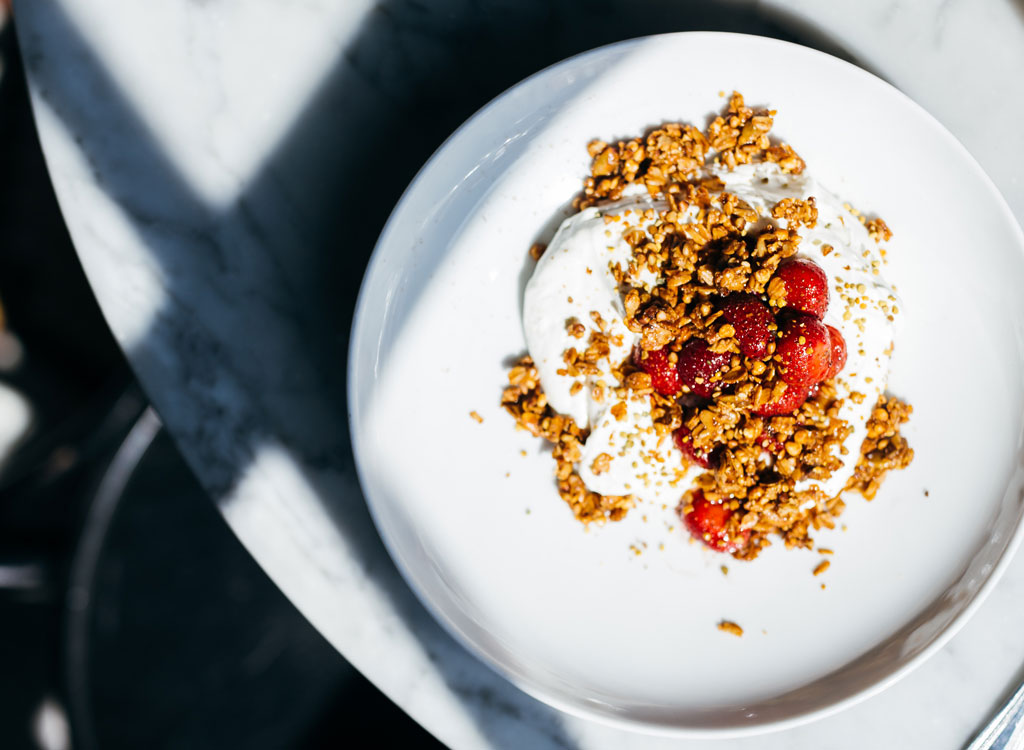
Though you may think skipping a meal such as breakfast will help you lose weight because you would be consuming fewer calories, numerous studies have actually shown that bailing on breakfast is bad for your waistline. "Why," you ask? It turns out that skipping breakfast not only means you'll likely consume more calories later in the day, but eating more calories in the later part of the day is a nightmare for metabolic circadian rhythms, which help keep your weight in check.
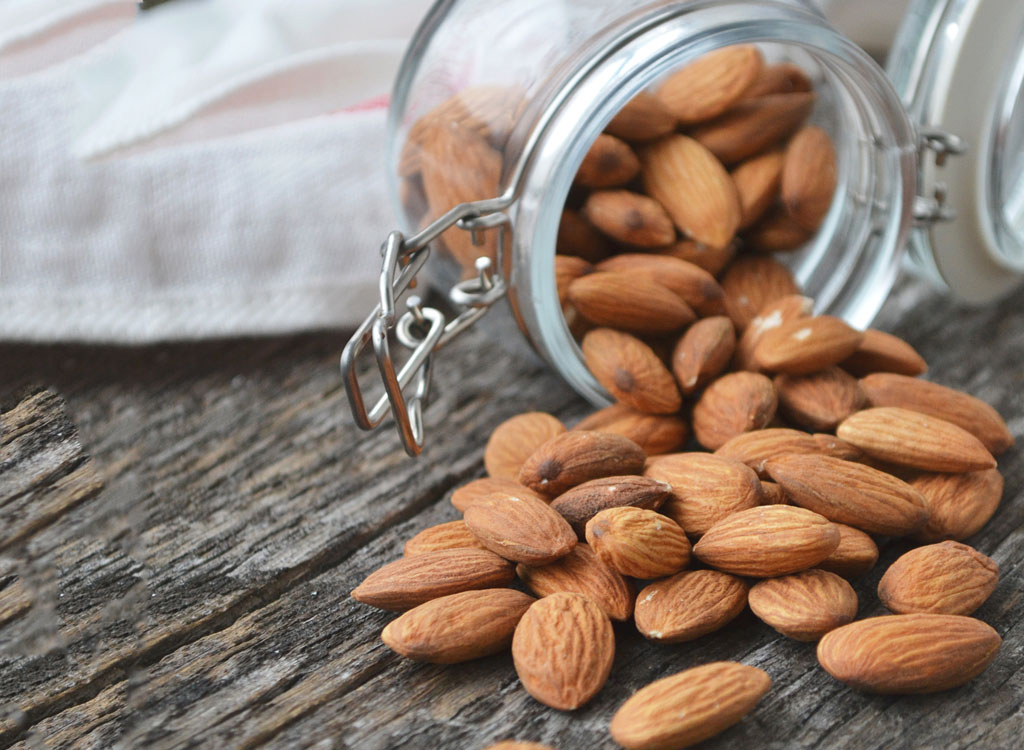
If you feel yourself getting those midday hunger pangs, put down the soda and candy bar and opt for some nuts instead. Walnuts, almonds, cashews, and Brazil nuts are all low in carbs while also being excellent sources of good fats and fiber, meaning they keep you fuller longer. According to a study in The Journal of Nutrition, eating almonds with main meals reduces some markers of oxidative damage, which improves your overall health.

Although white potatoes offer some potassium and fiber, sweet potatoes reign supreme in the nutrition department, so always reach for sweet potatoes instead of their white counterparts. A large sweet potato contains around 4 grams of satiety-boosting protein, 25 percent of the day's belly-filling fiber, and 11 times the recommended daily intake of vitamin A. What's more? It's less than 200 calories. By contrast, a white potato has upwards of 250 calories.
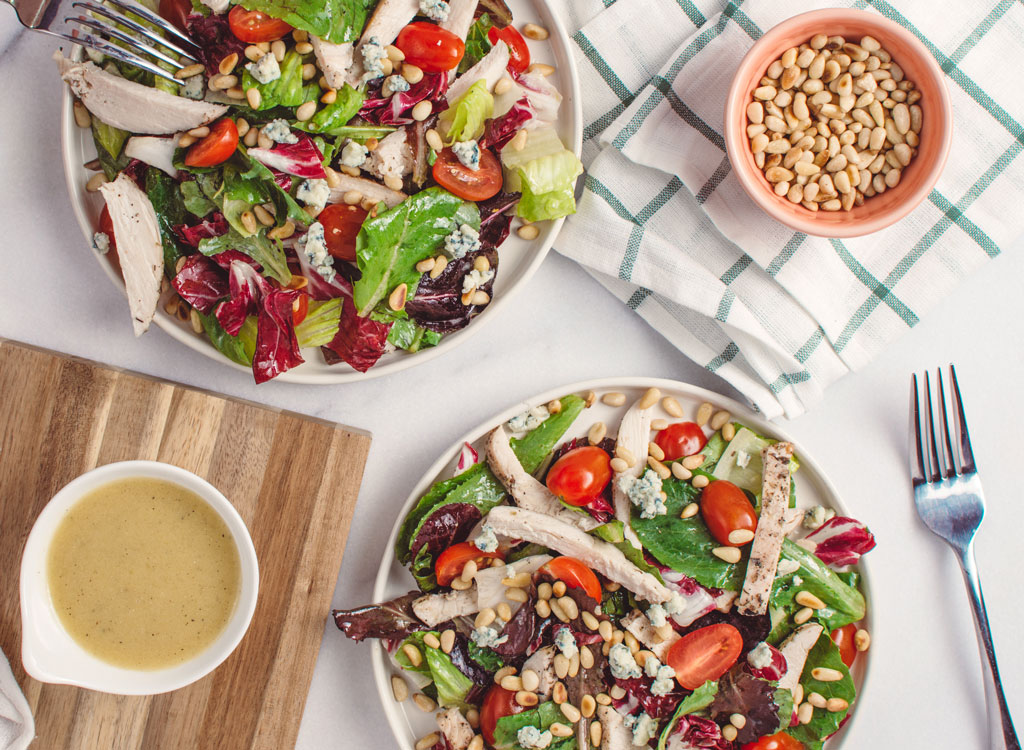
It should come as no surprise that what you put on your plate matters, especially if you're trying to shed some pounds. For a balanced and healthy diet, two-thirds of your dinner plate, for example, should consist of lean meats and vegetables—think salmon and broccoli or turkey and spinach. The remaining third can consist of starch, but even then aim for healthier choices such as whole grains, lentils, or sweet potatoes.
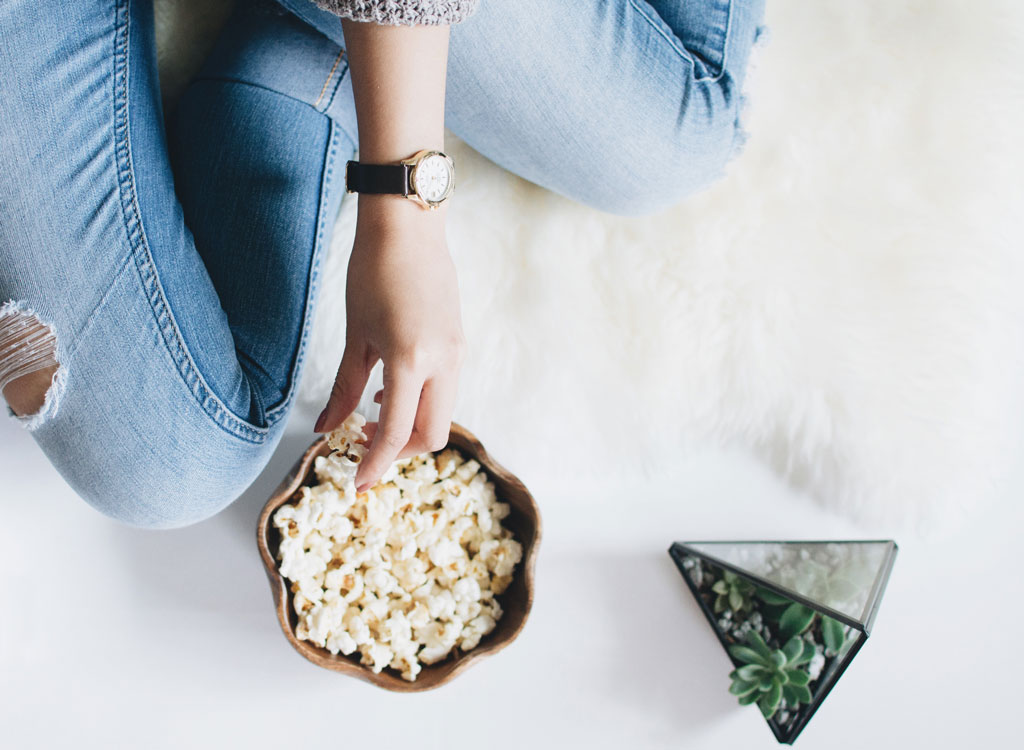
It's not just important to snack healthily throughout the day, but it's also crucial to know when you should snack. A study published in the Journal of the American Dietetic Association found mid-morning snackers typically eat more over the course of a day than afternoon snackers. Furthermore, researchers found that dieters with the mid-morning munchies lost an average of 7 percent of their total body weight while those who did not snack before lunch lost more than 11 percent of their body weight. That's a difference of nearly 6.5 pounds for a 160-pound woman with a weight-loss goal.
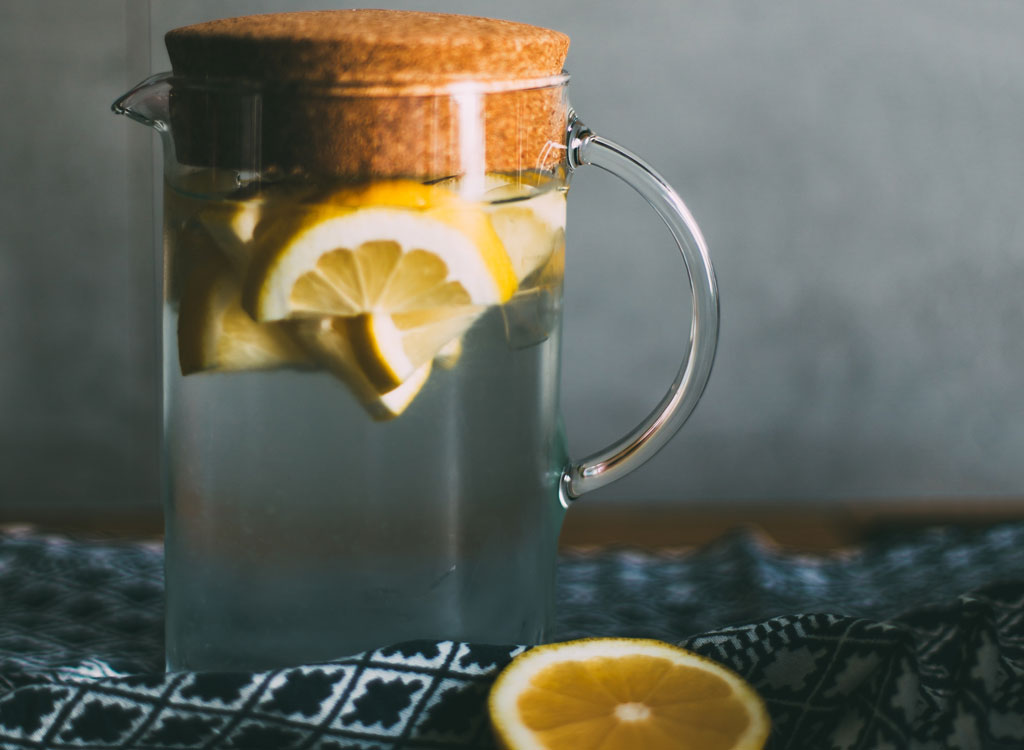
Not only is drinking lemon water a healthy, low-calorie alternative to soda or juice, but lemons themselves have also been shown to contribute to weight loss. Just one lemon contains an entire day's worth of vitamin C, a nutrient that has the power to reduce levels of cortisol, a stress hormone that triggers hunger and fat storage. Additionally, lemons also contain polyphenols, which researchers say may ward off fat accumulation and weight gain. Believe it or not, even the peel is beneficial because it is a potent source of pectin—a soluble fiber that's been proven to help people feel fuller, longer. According to a study published in the Journal of the American College of Nutrition, participants who ate just 5 grams of pectin experienced more satiety.
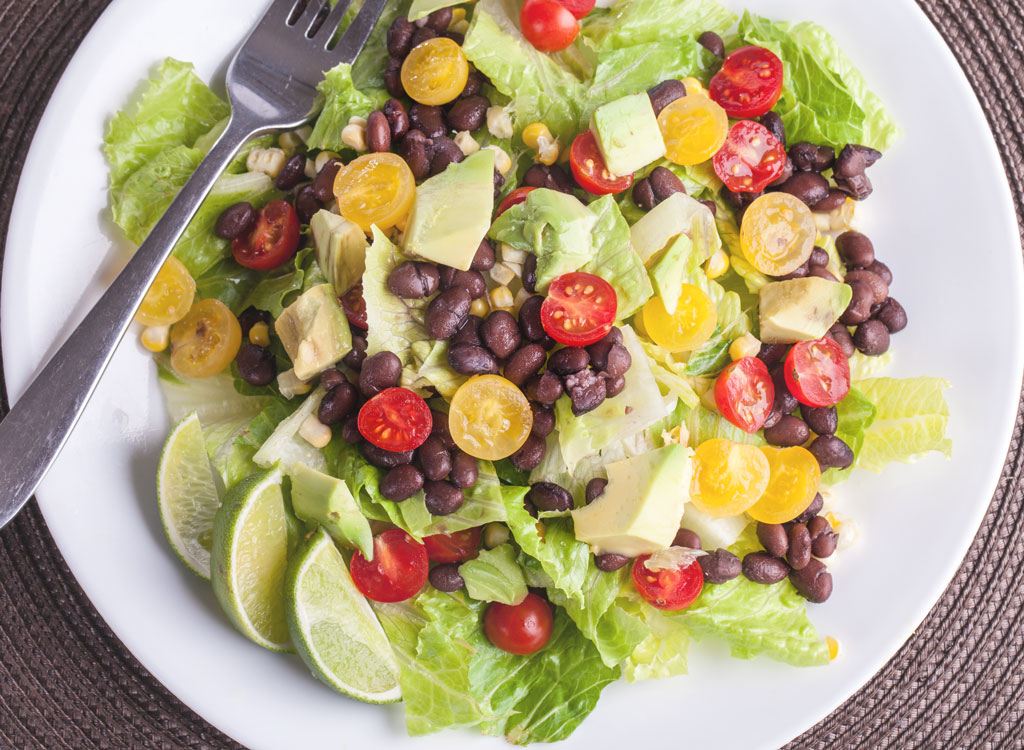
Beans can help boost feelings of fullness and manage blood sugar levels, making them an excellent ally in your weight loss battle. In fact, a recent study published in The American Journal of Clinical Nutrition found that eating one serving a day of beans, peas, chickpeas or lentils could contribute to modest weight loss. Kidney beans, in particular, are an excellent source of fiber while also being low in carbs, making them an ideal pantry staple for those looking to shed a few pounds.

Not only is tea a low-calorie alternative to coffee-based drinks that tend to be packed with milk and sugar, but certain varieties of the soothing beverage can actually help contribute to weight loss. For example, Nicole Anziani, MS, RD, CDE, suggests drinking cinnamon tea because the cozy beverage may even help decrease blood sugar due to cinnamon's effect on blood glucose. Similarly, mint tea can help with weight loss because mint is an appetite suppressant. An animal study published in theJournal of Digestive Diseases found that peppermint oil can relax stomach muscles, which can increase bile flow and improving the digestion of fats.
RELATED: What Happens to Your Body If You Drink Tea Every Day
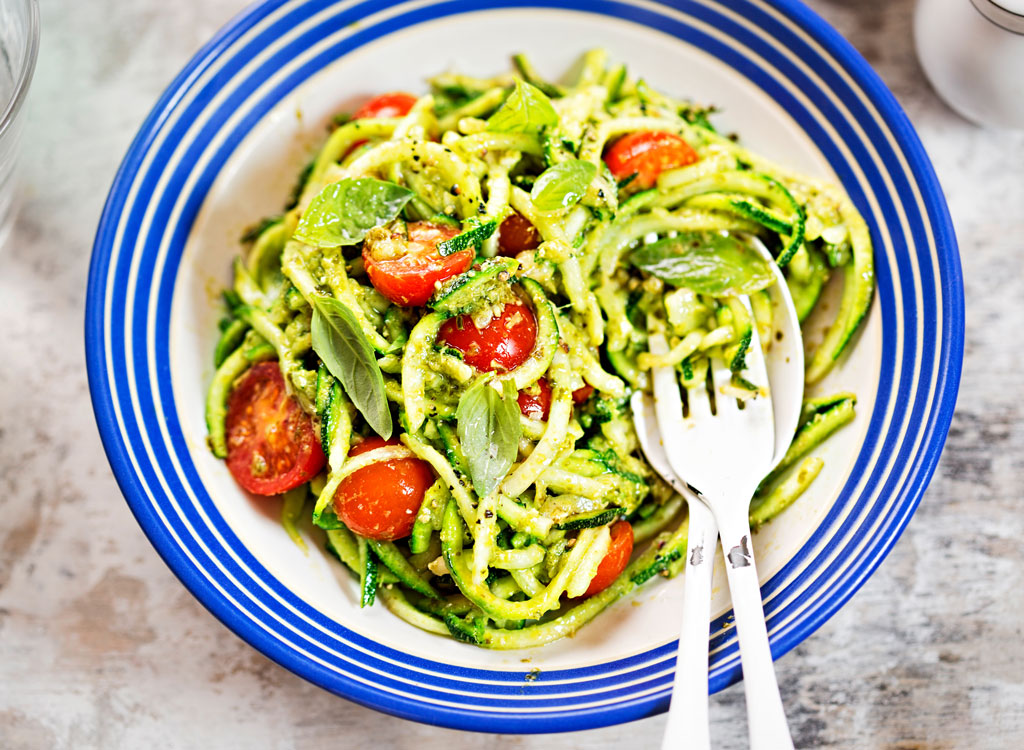
Zucchini noodles look like spaghetti, but the similarities pretty much end there. Eating zoodles over pasta cuts out empty carbs to help you lose weight without exercise, but it also adds ever-important vitamins and fiber. Whilee two cups of pasta contain 480 calories, 90 grams of carbs, and 2 grams of fiber, two cups of zucchini zoodles boast 66 calories, 12 grams of carbs, and 4 grams of fiber. If prepared well, zoodles can be just as flavorful as a bowl of spaghetti, and they can easily help you achieve your weight loss goals. If you need more inspiration, take a peek at these food swaps that cut calories!
Fat Loss Diet Plan Without Exercise
Source: https://www.eatthis.com/how-to-lose-weight-without-going-to-the-gym/
0 Response to "Fat Loss Diet Plan Without Exercise"
Post a Comment